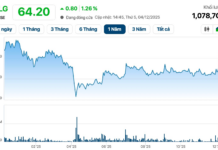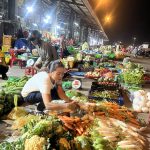Volatile price hikes have been the story of the year. From rice and coffee to cacao, surging prices have wreaked havoc on related industries. At its peak in March-April 2024, the cacao price surge sparked concerns of an unprecedented crisis in the chocolate industry.
According to the International Cocoa Organization (ICCO) and the World Bank, cacao prices skyrocketed from around $2,300–$2,500 per ton to $11,000 per ton in just the first four months, a fourfold increase compared to the previous year. This dramatic rise was primarily due to severe crop failures in major cacao-producing countries like Ivory Coast and Ghana, which account for a significant portion of global cacao production.
As of September 19, 2024, cacao prices had cooled off, falling to $8,000 per ton, but still nearly three times higher than the same period last year. Consequently, chocolate prices have been on a steep upward trajectory.
Market research firm Circana noted an 11.6% increase in chocolate prices at US retail stores in 2023 compared to the previous year. Looking ahead, confectionery giants Hershey and Cadbury Mondelez have warned that they will have no choice but to pass on the higher cacao costs to consumers.
A similar scenario is playing out in Vietnam, with chocolate businesses indicating price hikes during the year-end shopping peak after enduring input cost pressures and squeezed profit margins.
In Vietnam, cacao prices have doubled. Farmers in provinces like Ben Tre and Dak Lak reported prices ranging from VND 150,000–160,000 per kg of dry cacao, even reaching VND 210,000 at certain points.

Cacao prices have cooled off but remain three to four times higher than the previous year.
While the price surge has brought cheer to farmers, it has also pushed up raw material costs, causing challenges for many confectionery and chocolate manufacturers.
Puratos, a company engaged in cacao cultivation and supply in Vietnam, shared that the price hike presented significant challenges in ensuring a stable supply of raw materials (cacao beans) and preventing drastic fluctuations in their product prices, which could impact their customers’ businesses in the Vietnamese market.
A Puratos representative explained that when global cacao prices surged, their procurement prices in Vietnam had to increase accordingly to adhere to the principles of the Cacao-Trace sustainability program. This doubled the company’s raw material costs, including payments to farmers and imports from African and other regional countries, directly impacting their profits.
Additionally, Puratos’ diverse customer base in Vietnam meant that different cacao compositions in chocolate products led to varying levels of impact across customer segments.
“The group using pure dark chocolate was the most directly and significantly affected by the sudden cacao price hike. As the market leader in Vietnam, we aim to maintain stable chocolate prices for the domestic market as much as possible. However, the extreme volatility in cacao bean prices (at times tripling since the beginning of the year) has made it exceedingly challenging to keep prices at 2023 levels. We have encountered difficulties in explaining price adjustments to our customers. Some have reduced their chocolate consumption and sought alternative ingredients for their products, resulting in decreased sales revenue,”
the representative elaborated. It is understood that
Puratos has had to increase their product prices by 20-30% since the beginning of the year.
As a leading confectionery manufacturer, known for their ChocoPie brand, Orion has also been heavily impacted by the surge in raw material costs. They maintained a stable pricing policy in 2023 despite increases in other raw material prices, but the cacao price hike in 2024 has made it increasingly challenging to continue this approach, despite their desire to support consumers.
Similarly, Nguyen Ngoc Diep, CEO of Alluvia Chocolate, a chocolate and cacao powder producer, shared that they had to navigate challenges in raw material procurement for the first nine months of the year, ultimately leading to a
10-15% price increase compared to the previous year.
Consumers can expect to pay more for chocolate products during the upcoming year-end and Tet holiday season.
According to the Ho Chi Minh City Department of Industry and Trade, the sudden spike in raw material prices, particularly cacao, has impacted the cost of products in the confectionery and chocolate industry. For items under the price stabilization program, companies can request price adjustments from the Department of Finance when input costs rise by 3-5%. However,
as chocolates are not included in this program, businesses have the autonomy to set prices based on market realities.
“Post-Flood: Curbing Price Hikes, Combating Inflation”
Inflation has eased and market prices have stabilized. However, according to experts, the unpredictable nature of floods and their potential impact need to be considered in the coming months. If the production and business activities in the areas affected by the third storm can be quickly restored, and supply-demand connections are re-established, leading to stable prices, inflation can be kept under control and this year’s GDP growth target can be achieved, or even exceeded.
Mastering the Art of Price Control
The manufacturing, supply, and distribution businesses are tactfully reducing related expenses to keep prices stable as consumers continue to spend cautiously.








































